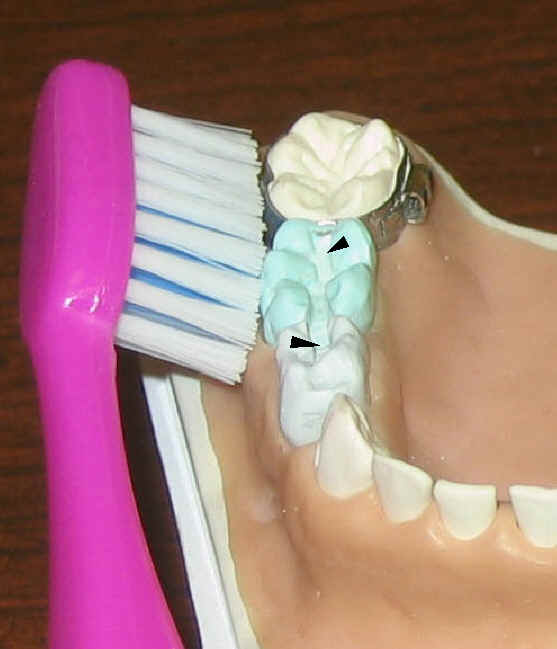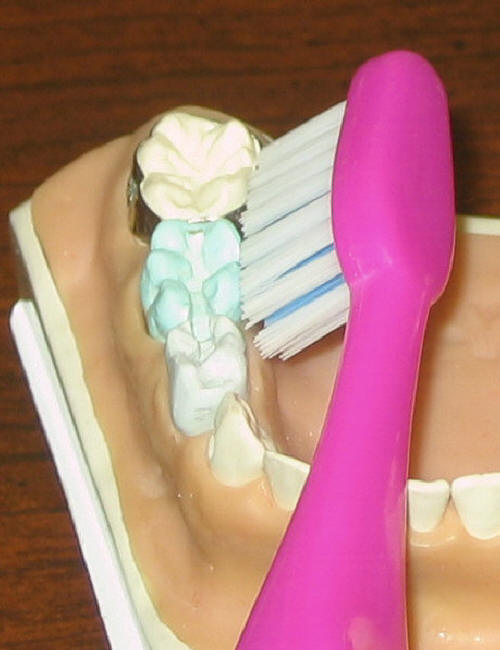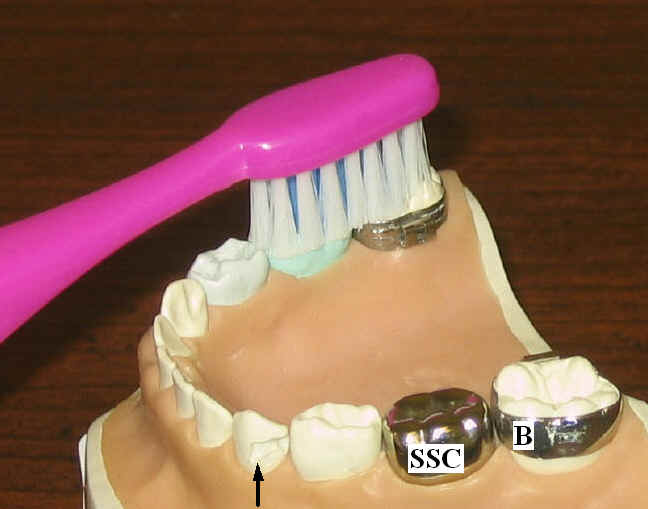|
|
||
|
Fig.1 |
||
 |
 |
 |
|
Fig.2 |
Fig.3 |
Fig.4 |
Dental Education Lecture: Toothbrush for Kids
|
|
||
|
Fig.1 |
||
 |
 |
 |
|
Fig.2 |
Fig.3 |
Fig.4 |
Child toothbrush is smaller, with its short head and handle (Fig.1). More importantly its handle is relatively thicker with deeper concave and convex surfaces. This makes it easy for a child to hold the brush.
As discussed in Brushing for Kids, we should brush the outer surface (Fig.2) and inner surface (Fig.3) of teeth at 45 degrees toward tooth-gum junction. The biting surface of back teeth should be brushed at 90 degrees (Fig.4).
If a child does not brush the biting surface very well and eats a lot of sweet, cavities develop as indicated by arrowheads in Fig.2. If he or she does not brush the outer surface well, a cavity can be found in the area shown by arrow in Fig.4. White filling can be used to fill the cavity in the front tooth (arrow, Fig.4). Small cavities as shown by arrows in Fig.2 can be fixed with either white or silver filling. When these cavities are big or nerve is removed, we need a crown special for children called SSC (stainless steel crown) for protection (Fig.4). B in Fig.4 is an abbreviation of band. Band is used for space maintenance or with braces.
Xin Wei, DDS, PhD, MS 1st edition 01/25/2009, last revision 03/20/2010